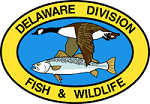Search Level: Standard
Search Term(s): Spartina alterniflora (1 record found)
Search Term(s): Spartina alterniflora (1 record found)
POACEAE
Grass Family
Grass Family
Spartina alterniflora (salt marsh cordgrass)
[ + ]
Synonym
--
Carex Section
--
Meaning of Scientific Name
Spartina: from the Greek meaning "a cord" made from this grass; alterniflora: alternating flowers
Native Plant
Yes
Life Form
Perennial Grass
Phenology (Flowering Period)
August-September
Physiographic Province
☐ Piedmont
☑ Coastal Plain
County Distribution
☑ New Castle
☑ Kent
☑ Sussex
Habitat
Salt marshes
State Status
Common
Piedmont Status
--
Coastal Plain Status
Common
Global Rank
--
Federal Status
--
Geographic Affinity
--
Species at Limit of Distribution
☐ Northern
☐ Southern
North American Distribution (Non-indigenous Species)
--
Coefficient of Conservatism
7
Invasive
--
Invasive Watchlist
--
Global Origin (Non-native Species)
--
Wildlife Values
Provides nest sites, food and cover for Clapper Rail, Black Rail, Marsh Wren, Sedge Wren, Seaside Sparrow, Saltmarsh Sharp-Tailed Sparrow, Coastal Plain Swamp Sparrow, American Bittern and the Least Bittern, and also provides cover for Diamondback Terrapins. In addition, S. cynosuroides is the host plant for Problema bulenta, the Rare Skipper.
Wetland Indicator Status
OBL
Medicinal Properties
--
ID Notes
--
Additional Info
Saltmarsh cord grass has two markedly different growth forms. The tall form can be 2-3 m in height and the short form from 10-40 cm in height. These height differences are likely due to a variety of environmental factors, related to salinity levels, available nutrients and drainage. Low nutrient levels, high salinity levels and poor drainage, usually result in short form plants.
Habitats in which this plant occurs
Brackish Tidal Herbaceous WetlandsTidal Salt Water Low Marshes


